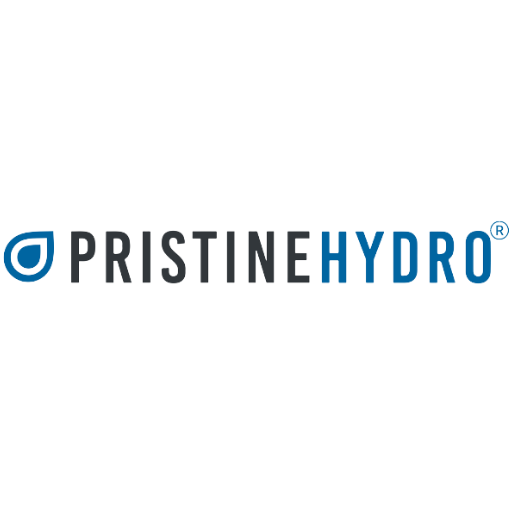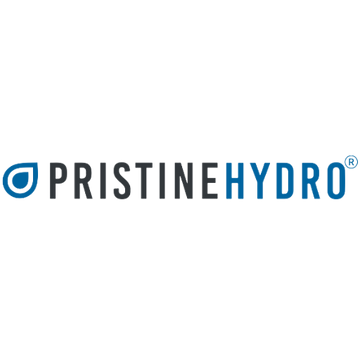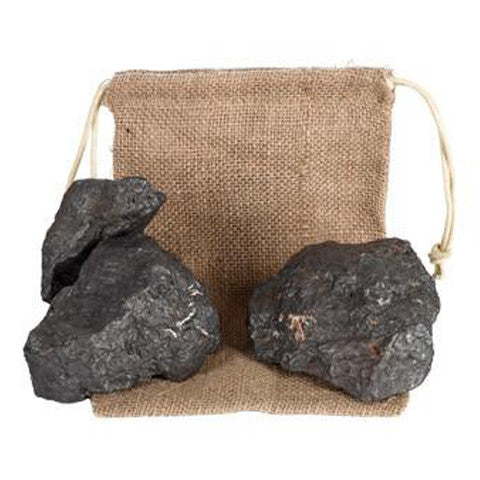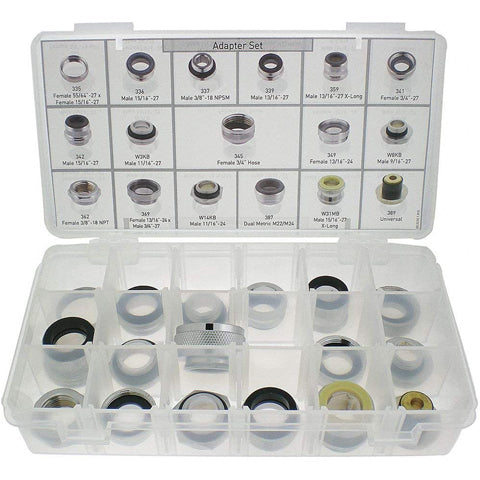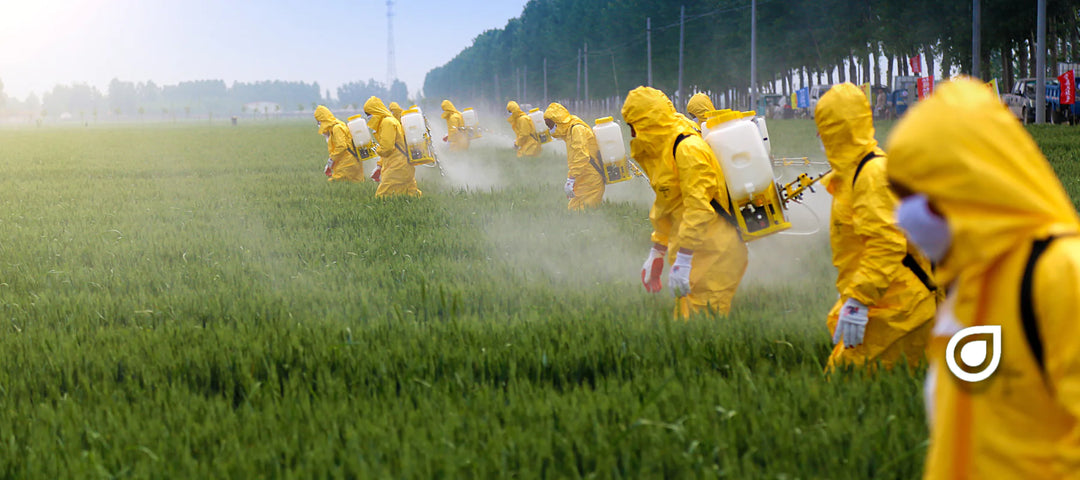11 Poison Threats to the Human Body: How Long Have They Been Poisoning Us?

One of the most recognizable positives of the last 2+ years has been the overwhelming amount of people who've started to investigate all matters of personal health... Which each question pondered; another layer of knowledge is gained.
Simple questions that lead to some personal investigation... as more information is uncovered, specific to one’s health and wellbeing - there's an empowerment element that becomes triggered, organically.
Where we become more aware of just how connected our health is to our understanding of how things work. Once we have a sense of knowing, we can begin to make changes, proactively... where each smart decision leads to another - creating momentum along with a desire to continue - becoming more attune with how our body communicates to us - letting us know that something is wrong.
In the spirit of individual awareness, our intentions with this article are to shine a light on some of the problems that require creative problem solving.
KNOW THIS…
As you uncover more information about the root causes of some of today's greatest problems - things don't get easier... However, the spirit within becomes invigorated with an energy that can be transmuted into positive outcomes, for yourself personally and with those you care most about.

As you can see from the above search query, you're not alone... let's dive in.

11 Poison Threats You Need to Know About
Poison threats are more prevalent than you may know in this modern world in which we live. Some threats can damage our bodies and overall health and emanate from the food we eat, water we drink, and even the air we breathe. Some of these threats are in chemical form, while others are pharmaceuticals; both affect our bodies and even our minds.
These threats come from many sources, including, but not limited to:
- Biofuel’s production
- Major Chemical Production
- Large Agribusiness and Food Processing/Production
- Dairy farms
- Livestock farms
- Tobacco companies
- Heavy metals such as Arsenic, cadmium, chromium, copper, nickel, lead, mercury, lead, and uranium
- Pesticides, Plastics and more.
Please note; it's easy to become angry when first learning more about how this has happened... but you should try to zoom out a bit - recognizing that this is something that started long before you, your parents, your grandparents and their parents have been alive.
The goal here is for us to become more closely aware of the problems - so we can make proactive changes, individually... leading by example, helping others, and becoming more proactive about voicing the changes that we'd like to see addressed - where this is not a you or me thing... it's a WE thing... it's a HUMANITY FIRST thing.
It's time to become aware of these everyday threats and protect your health, win the war against pollution, and restore the environment for ourselves and future generations!
Make sense?

1. Genetically Engineered Crops and GMOs
The world's leading producers of genetically engineered (GE) crops, have been accused of outright lying about the safety of their products. Their critics claim that these products are harmful to human and animal health and the environment, even conspiring with governments and regulatory agencies to keep the harmful nature of these products secret from the public as well as proper government oversight or regulation.
While critics claim that the actions of these companies constitute "a full-fledged assault on democracy,”, these corporations operate within the established democratic system. The USDA does not require companies to disclose the technical specifications of their seeds to the public. These companies also do not force anyone to use their products; they develop and market them to a willing consumer populace, generating their sales.
But there is one significant issue here: Our food supply is being poisoned by GMOs and other high-tech methods used to increase yield and consumer desirability of farm products.
GMOs can dangerously alter major segments of our food supply by turning plants into "synthetic organisms" that do not reproduce naturally. This causes problems in several ways. It increases reliance on pesticides, which can harm humans through exposure or ingestion through contaminated foods or water and biodiversity is reduced because the population of species such as bees that pollinate crops are reduced dramatically.
The idea behind using surfactants is to help reduce soil erosion and protect the environment from harmful chemicals. However, critics argue that using surfactants could be dangerous because they can introduce toxic chemicals into areas of human population.
The real issue here is how these toxins make their way into our bodies in the first place — through contaminated food or water. It's tough for farmers to ensure their crops aren't contaminated by toxic run-off from neighboring properties and other farms.
We have an independent agency protecting our health — the Food and Drug Administration (FDA), however, this agency is so underfunded that it can't possibly achieve its core mission. There are only three FDA scientists for every 10,000 potentially harmful chemicals in the US!
2. Ethanol Production and Stillage
The largest ethanol plant in the world uses approximately 20 million bushels of corn every month to produce 1.5 billion gallons of ethanol.
A by-product of this process is a toxic residue called stillage, which contains high levels of nitrogen, phosphorus, and trace metals such as cadmium and arsenic.
EPA regulations require ethanol producers to treat stillage before discharging it into the environment, generally rivers. Though failure to comply with these regulations should result in severe penalties, there have been no known prosecutions for violations of these regulations.
Many large ethanol plants were initially located near non-populous areas, however, many of these areas have steadily expanded in population over the years. As such, in recent years more and more homes have been flooded with stillage due to heavy rains, and as a result, many families have suffered through health problems caused by this contamination.
3. Agricultural Chemicals
Agricultural chemicals are one of many sources of pollution in waterways.[1] Nutrients, pesticides, and herbicides can run-off from the land through the soil and into rivers, lakes, streams, and groundwater.
They can cause a variety of problems. These chemicals are toxic to aquatic organisms and humans who drink or swim in the water. When nutrients such as phosphorus and nitrogen run-off into waterways, they can cause algal blooms and excessive weed growth. These blooms rob the water column of oxygen, leaving dead zones where fish and other organisms can't survive.
There are several ways that agricultural chemicals enter waterways. The wind carries them from fields to streams and lakes, and rainfall washes them into nearby bodies of water. And farmers may accidentally spray their fields with too much pesticide or fertilizer, allowing excess amounts to seep into the soil and eventually end up in nearby bodies of water. They can also wash off the equipment used on a farm and make their way into streams when it rains.
4. Soy, Soybean Oil, and Sugar Production
Billions of pounds of soybeans are produced each year in the US; most are exported to foreign markets. The byproduct, soybean oil, is sold to food producers for use in processed foods and feedlots as a cattle feed supplement. US processing plants produce millions of gallons of soybean oil each year.
Major soybean oil plants have been releasing pollution into the air and wastewater into local waterways for more than a decade, endangering nearby communities and ecosystems, according to an investigation by Midwest Center for Investigative Reporting and Reveal from The Center for Investigative Reporting.
Sugar production and the production of ethanol from sugarcane bring problems with serious impacts. For starters, sugarcane production uses pesticides that can have devastating impacts on people and the environment. In Brazil's Cerrado region — a vast tropical savanna that scientists have declared as one of the most biologically rich areas on Earth — most of the original vegetation has been destroyed because of intensive agriculture and cattle ranching. The area is now dominated by soybean and sugarcane plantations — primarily driven by demand for livestock feed and ethanol production. This has led to widespread deforestation, water contamination, and soil erosion.
5. Food Safety – Regulatory Failures
The government's food safety system fails the public health. The government spends $1.6 billion a year to inspect food. Still, most inspections are announced ahead of time, and many inspectors say they often receive information from the companies they are inspecting. The Food and Drug Administration inspects only about 1 percent of imported food.[2]
Food labels are not reliable. A recent study by the Environmental Working Group (EWG) found that 39 percent of all packaged foods contained trans fats, even though foods producers are not required to list them on labels if there is less than half a gram in each serving.
The group also found that food companies use "natural" claims, even though federal regulations have no definition.[3]
On top of that, the United States Department of Agriculture (USDA) has proposed allowing meat from cloned animals into the food supply without requiring labeling disclosing their nature.
6. Large Hog Farm Pollutants
North Carolina is home to more than 2,000 hog farms, and most of them are not the rural family farms we might envision when we think of agriculture. These are industrial-scale operations, with hundreds or even thousands of hogs kept in a multitude of tiny pens. The animals live atop a sludge layer of their own manure, which is then pumped out as a liquid and stored in open-air pits that can contain millions of gallons of this toxic waste.
The scale of these farms is incredible. According to the EWG, one farm in Bladen County has nearly 8 million gallons of waste in its lagoons.[4] These lagoons can leak into groundwater and adjacent surface waters. They also emit toxic fumes that have been linked to respiratory problems and headaches for people who live nearby. When hurricane winds push floodwaters toward these pits, they can overflow, allowing the waste to flow into rivers and streams.
Whether this is a problem depends on how we define "livestock." The EPA allows farms with less than 1,000 animal units to self-manage their waste. A hog farm with 2,500 head of hogs (2,500 times .75) is considered a small livestock operation, and these smaller operations have no environmental controls and contribute to the pollution problem.
In the Atlantic States Marine Fisheries Commission states of North Carolina and Virginia, there are over 7,000 livestock operations with a combined animal inventory of over 10 million heads. The vast majority are hogs, and they produce more than 1 billion pounds of hog waste annually.
The trouble is that these hog operations are located in the coastal plain of North Carolina and Virginia, where rainfall is plentiful, and soils are porous. Any waste produced by these animals finds its way immediately into the aquifer from which drinking water comes.
7. Dairy Farm Pollutants
Dairy farms are big and important business, but they are also a significant source of pollution.
Manure from dairy farms is a source of air pollution and water and soil pollution, and it's a significant source of greenhouse gases such as methane, contributing to climate change. The phosphorus in manure can poison waterways and cause harmful algal blooms, ultimately harming people and wildlife.
Dairy cows produce 13 times more waste than the entire human population of the U.S., according to a report by the nonprofit Food & Water Watch that looked at data from the Environmental Protection Agency (EPA).[5] We're talking 1 billion tons of manure each year — or 89,000 pounds produced per minute!
The dairy farm's waste is typically stored in open-air pits or lagoons. The waste is often sprayed on nearby fields as fertilizer or used to feed cattle, and it can be applied to the areas in a liquid form or dried and incorporated into cattle feed.
These practices have been associated with health risks for people living near concentrated animal feeding operations. The EPA has identified hydrogen sulfide, ammonia, and methane — all found in large quantities in dairy waste — as hazardous air pollutants that may cause adverse health effects at high enough concentrations. Hydrogen sulfide can irritate the eyes and the respiratory system, while ammonia can irritate the respiratory system.
Methane is a greenhouse gas that contributes to climate change. The EPA says large-scale methane emissions can also lead to local-scale "ground-level" ozone formation, a major component of smog that irritates lungs.
8. Pesticides
When you think of someone as having been poisoned, you probably imagine a person who has consumed something labeled "POISON" or eaten from a dish laced with rat poison. But what about the pesticides in our food, water, and air? They too are poisons and are linked to health problems in humans and animals alike.
The most dangerous pesticides are called organophosphates. They affect the nervous system, composed of the brain and spinal cord, and a complex network of nerves that carry messages to every part of the body. Exposure to large amounts can cause seizures, coma, and death in humans.
Exposure to smaller amounts can result in various health problems, including headaches, fatigue, dizziness, muscle weakness, nausea, diarrhea, loss of coordination, difficulty concentrating and thinking, and changes in mood and behavior.
The facts show that our food supply has been systematically poisoned by legal pesticides found in all prevalent food types.
The use of pesticides in the United States is widespread and on the rise. In a recent report, the Natural Resources Defense Council (NRDC) found that over 99% of tested apples contained pesticide residues, 97% of peaches, 95% of nectarines, and 92% of celery. Even healthy super-food spinach had traces of pesticide residue on more than 90% of samples tested.
In addition to fruits and vegetables, other foods we eat daily have been found to contain pesticide residues. In fact, in a recent report by the EWG, Americans were urged to eat less meat because meat products contained high levels of antibiotics and hormones. The report also mentioned that several types of meat had high levels of pesticides.
9. Fluoride
The fluoridation of public water supplies is a massive work of fraud. If fluoridation is so effective, why is it that Western countries that do not fluoridate their water have fewer cavities?

🤔 Have you heard or read this before?
"Fluoride was first used in U.S. drinking water in 1945. Fluoride was also used in Nazi prison camps to sterilize inmates and make them submissive." 👀
The topic of fluoride is very controversial... Why? Well... think about the repercussions involved. If a substance is known to negatively affect certain key components of human anatomy and biological function - in ways that impair discernment... Sleep cycle, puberty, oxidative stress, alzheimers disease, and more 😳
"But but but, it's proven to help prevent cavities...?
Do some investigating on your own and feel free to let us know what you come up with - we'll be sharing an exclusive article on this one topic in the future.
--->> You can read what someone at Harvard has to say about fluoride,
"Fluoride seems to fit in with lead, mercury, and other poisons that cause chemical brain drain," Grandjean says. "The effect of each toxicant may seem small, but the combined damage on a population scale can be serious, especially because the brain power of the next generation is crucial to all of us."
--->> Then read what this brave human is sharing about fluoride. One of many who's speaking out about the negative impacts - highlighting the many instances of whether or not the means justifies the ends...

📷 (Credit) Truth About Fluoride “Fluorides Effect on the Pineal Gland”
The primary source for fluoride compounds used to fluoridate public water supplies is an industrial waste product from the fertilizer industry, containing high lead, arsenic levels, and other potentially toxic substances. The fluorosilicic acid used for water fluoridation is a clear, colorless liquid containing 21% silicon tetrafluoride (SiF4), 23% hydrogen fluoride (HF), and 39% water.[6] Air pollution control devices collect this acid to capture fluoride gases released in phosphate fertilizer production.
Fluoride has been proven to cause cancer and genetic damage. The FDA has never approved fluoride for ingestion; it is only approved for topical application.
10. Heavy Metals
It is virtually impossible for us to avoid contact with heavy metal toxins. Industrial pollutants and biotoxins are rapidly destroying our environment, and they seem to be an inescapable presence in our daily living. Heavy metals such as mercury, aluminum, lead, arsenic, and cadmium are found everywhere. They are in the air that we breathe, the water we drink, the food we eat, and even in the products we put on our skin.
How can these heavy metals negatively impact your health? Well, mercury is a neurotoxin that destroys brain tissue and impairs neurological function. Aluminum is also toxic to your brain and nerves. Lead leaches calcium from your bones, teeth, and organs. Arsenic damages the immune system by attacking white blood cells and decreasing their ability to fight off infections. Cadmium interferes with the absorption of essential minerals such as zinc and iron.
Most people believe that we no longer have to worry about toxic elements like mercury, lead, and arsenic because we have laws that prevent industries from polluting the environment with these elements, and we have made great strides in the cleaning up environmental contamination. However, this is only true for remote industrial areas where there had been pollution from coal-burning power plants, old landfills, or heavily mined areas for minerals.
11. Plastics
The average American person consumes and excretes 50,000 particles of microplastic per year — the equivalent of eating a credit card every week.[7]
This type of poisoning is happening through our food, water, and the air we breathe. It's caused by something that we all take for granted: the most amazing invention of the 20th century — PLASTIC!
How? Plastic input chemicals such as BPA and phthalates have been linked to many health problems in children and adults, including fertility issues, heart disease, diabetes, and cancer.
Every cell in our body has a receptor for estrogen. When we consume chemicals with estrogenic activity (EA), our body begins to behave as if it were pregnant, increasing mutated cells that can lead to breast cancer. Even more frightening is that these chemicals are found in almost every woman's breast tissue.[8]
The frightening thing about these chemicals is that they mimic natural hormones in our bodies. When we have excess artificial hormones coursing through our veins, they throw our delicate hormone balance off-kilter. This can cause hormonal imbalance symptoms like infertility, PMS and menopause symptoms, thyroid dysfunction, weight gain or loss, etc.
So, What Can We Do?
Now that you are aware, you can address the #1 thing in your immediate control... Stop drinking tap water, stop drinking bottled water and get a proper water filtration system.
We humans are made up of 60%+ water. Our blood detoxifies using the water that we ingest. Our bodies are detoxification machines... think about this for a minute.
Think about how many toxins we are exposed to daily... yet we're still here!
Every night when we go to bed the bodies of life within get to work... attacking, repairing, and addressing all the choices that were made throughout the day.
We expel toxins first thing when we wake up, don't we? Run to the restroom, right? How good does that feel?
When we move our bodies and sweat...? We're excreting toxins... what do you think your sweat is made up of?
If you know water is such an essential component for overall health and wellness, you'd want to have the purest most healing form of water going into your detoxification machine, wouldn't you?
Well... let's get the engine fueled up!
Get an Under-Counter Water Revival System™ for the home, get one for your office or place of work, talk to the school district where your children are attending school every day, reach out to your public service members - those who are trying to represent you, who are selling you on how they are going to be your voice, for the betterment of you and those around you!
If you're someone who travels a lot or is living on the road... get our Travel-Portable Water Revival System™
--> How awesome is this work from RV setup?

📷 (Credit) xscapers.com (Mobile Workspaces: An Office With a View)
...
Let's go! There's so much good work to be done... but we need more coherent, healthy, inspired humans to make a difference.

Onward!
Article Citations:
[1] Agricultural Contaminants, USGS, 03/01/2019, https://www.usgs.gov/mission-areas/water-resources/science/agricultural-contaminants
[2] More Information on Safety and Agriculture, Public Citizen, https://www.citizen.org/article/more-information-on-food-and-product-safety-and-agriculture
[3] https://www.mdpi.com/2072-6643/13/9/3020/htm
[4] Sarah Graddy, UPDATE: Exposing Fields of Filth: Factory Farms Disproportionately Threaten Black, Latino and Native American North Carolinians, EWG, 07/30/20, https://www.ewg.org/interactive-maps/2020-fields-of-filth/
[5] Hard to Digest, Food and Water Watch, November 2016 Newsletter Issue, https://foodandwaterwatch.org/wp-content/uploads/2021/04/ib_1611_manure-digesters-web.pdf
[6] Water Fluoridation, Fluoride Alert, https://fluoridealert.org/issues/water/fluoridation-chemicals/
[7] Damien Carrington, People Eat At Least 50,000 Plastic Particles a Year, The Guardian, 06/05/2019, https://www.theguardian.com/environment/2019/jun/05/people-eat-at-least-50000-plastic-particles-a-year-study-finds
[8] Endocrine Disruptors, National Institute of Environmental Health Science, https://www.niehs.nih.gov/health/topics/agents/endocrine/index.cfm


